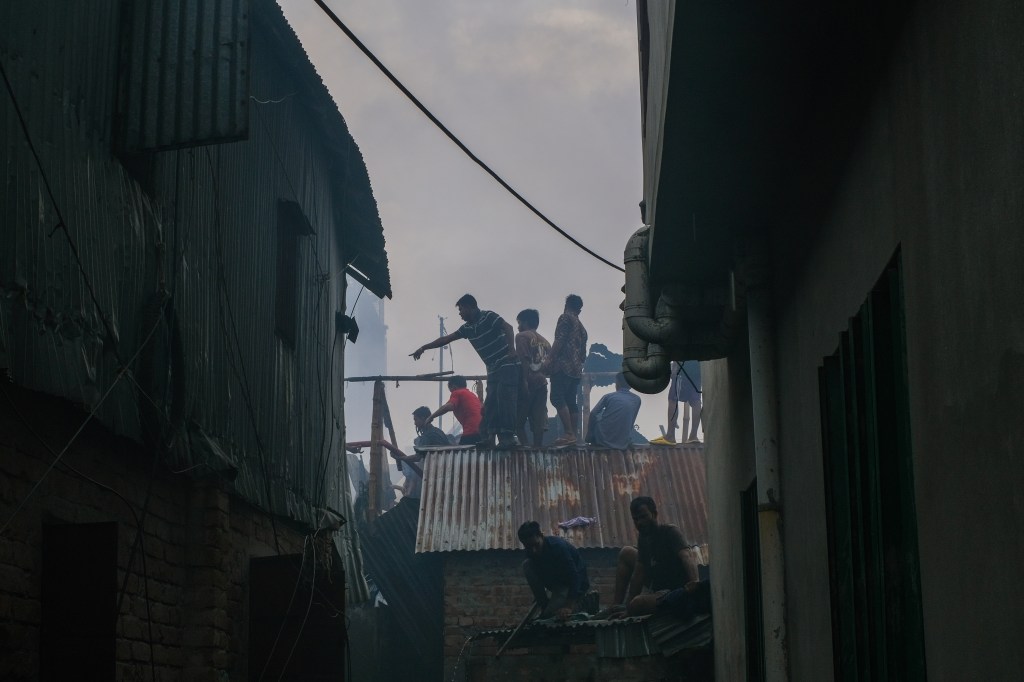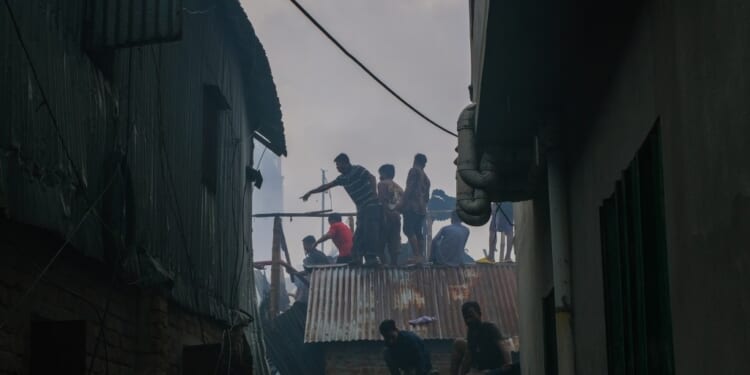
In 2015, the United Nations set out a wildly utopian set of 17 “sustainable development goals” to be achieved by 2030. The first of these could not be more ambitious: “End poverty in all its forms everywhere.” Others include “End hunger,” “Ensure healthy lives and promote well-being for all at all ages,” “Clean water and sanitation,” “Sustainable cities and communities,” and “Peace, justice and strong institutions.” These new goals came on the heels of an earlier set, the equally ambitious eight “millenium development goals” for poverty eradication, promulgated in the year 2000 and meant to be achieved by 2015. Most of those goals were missed. But that did not give the U.N. pause in setting out the new sustainable development series.
Taken together, all of these goals amount to a commitment to tackle virtually every conceivable problem in the world, and in ridiculously short time frames. To be sure, having aspirations is a good thing; they motivate and provide a sense of direction and hope. But it is also good to temper aspirations with a degree of realism, and sometimes with a dose of humility. In the case of the U.N., humility would have been particularly appropriate, given that the organization has a 65-year-old habit of setting out unachievable goals. Here is a sample:
- 1960-1970: The U.N. Development Decade (Resolved: Increase economic growth by 5 percent by the end of the decade.)
- 1970-1980: The Second U.N. Development Decade (Resolved: Create a just world order and 6 percent economic growth by the end of the decade.)
- 1974: The Universal Declaration on the Eradication of Hunger and Malnutrition
- 1975: The Lima Declaration & Plan of Action on Industrialization (Resolved: to have the less developed countries’ share of production go from 7 percent to 25 percent by the year 2000.)
- 1978: The Alma Ata International Conference on Primary Health Care (Resolved: Health for all by the year 2000.)
- 1980-1990: The International Drinking Water & Sanitation Decade (Resolved: Clean water for all by 1990.)
A just world order? Hunger eradicated? Health and clean water for all? Peace? Justice? No rigorously acquired evidence is necessary to see that these goals have not been achieved.
But here we are again, less than five years away from the 2030 date set for achieving the sustainable development goals. By some reports only 18 percent are “on track.” The U.N.’s own report on the goals’ progress in July notes: “The Sustainable Development Goals have improved millions of lives, but the current pace of change is insufficient to fully achieve all the Goals by 2030.” The summary goes on:
The report reveals real and substantial development gains during the past decade. Since 2015, the world has made notable strides in expanding access to education, improving maternal and child health, and bridging the digital divide. Effective prevention efforts have significantly reduced the burdens of infectious diseases such as HIV and malaria. Access to electricity has continued to grow…
Yet progress has been fragile and unequal. Millions still face extreme poverty, hunger, inadequate housing, and a lack of basic services. Women, people with disabilities, and marginalized communities continue to face systemic disadvantages. Escalating conflicts, climate chaos, rising inequalities, and soaring debt servicing costs are holding back further advancements.
Frankly, the U.N. should have known better. Hypothetically, you could divide the sustainable development goals into, at the very least, two categories: easy and hard. Had the U.N. done so, it might have been clearer that the “substantial development gains” noted in the above summary are relatively easy ones, and they only scratch the surface of poverty. Providing electricity, internet access, education, and reducing the “burden of HIV and malaria” are quite simply about things and money. (And, let’s be clear, “access,” and things like electricity, do not necessarily equal poverty reduction—as we are increasingly aware in our own “rich” countries, having access to school does not always equal being educated.) Moreover, the trillions of dollars spent on anti-poverty projects since World War II by agencies like the now-defunct U.S. Agency for International Development, the World Bank, and countless nongovernmental organizations have had little success. The countries where development aid makes up a substantial portion of their annual budgets (Malawi, Haiti, Niger, Burkina Faso, Lesotho, etc.) have stagnated. And of the 44 countries on the latest U.N. list of “least developed countries,” representing almost a quarter of the world’s 195 nations, 45 percent have been on the list for its full 54 years; 55 percent have been on it for 50 years; and 64 percent for over 40 years.
The 2025 goal report does get one thing right, however: “Systemic disadvantages” get in the way of poverty reduction. These “disadvantages” (and there are huge numbers of them) are what the U.N. goals since the 1960s have repeatedly misunderstood. The persistence of poverty has to do with an almost infinite number of factors, beginning with geographical location and ending with institutions, and the social-structural arrangements and cultural meanings that inform them. Because these complex matters are essentially nonmaterial, they are not amenable to quick fixes via money. As the late British economist Peter T. Bauer said in 1976, “Economic development is a major aspect of the historical process of entire societies, and is therefore not susceptible to general theories.”
Yet there are scores of general theories about economic development and its role in poverty reduction. But for all the valid points they make, actually solving the problem of poverty remains a black box. In the last two centuries, beginning with Henry Mayhew’s 1851 book London Labour and the London Poor, continuing through Henry George’s 1879 bestseller, Progress and Poverty, and on through 20th and 21st century historians and economists like Joseph Schumpeter, Douglass North, David Landes, John Kenneth Galbraith, Gunnar Myrdal, Ha-Joon Chang, Joseph Stiglitz, Deirdre McCloskey, and right up to the recently announced Nobel laureates in economics, we have an excellent sampler of theories about the ingredients needed to end poverty. But a working recipe that puts those ingredients together to solve the problem still eludes us. As for practical models—projects and programs that have been tried on the ground—it is easy to cite scores of them that delivered much less than hoped, beginning with the American “War on Poverty” from the 1960s.
There has of course been great progress on the poverty front. More people the world over are living longer and better lives, with more material comforts and benefits that were unimaginable in the beginnings of most of our lifetimes. But “ending poverty in all its forms everywhere”? This is simply not going to happen any time soon. Two factors, one old and one new, stand in the way. The first is human nature: Acquisitiveness, greed, selfishness, and tribalism have not gone anywhere, and in fact seem to be on the rise—perhaps exacerbated by urbanization and technology. The second factor is the accelerating speed of today’s world, a speed that makes it harder than ever for poor nations to catch up to wealthy ones. And that change has come about only in the last decade or so.
Nobel Prize-winning economist Joseph Stiglitz, in his 2006 book Making Globalization Work, wrote: “The task of less developed countries today is in some ways easier than that which faced Europe and the United States as they industrialized in the nineteenth century: they simply have to catch up, rather than forge into unknown territory.” What made it easy for Stiglitz to say this was powerful evidence that catching up could happen quickly. In the 2000s, China was the poster child for “simply catching up” (almost two decades later, it is us Americans who may need to catch up to China). And there were also the “Asian Tigers”—South Korea, Singapore, and Taiwan. The Tigers’ success was perhaps even more astounding than China’s: South Korea went from being a backward agricultural country to a major export-oriented manufacturing country, a transformation during which virtually the entire population was lifted out of poverty. Later on, we saw less spectacular, but still impressive, successes in Thailand and Indonesia. A 2018 Brookings Institution report named seven countries that had cut extreme poverty by at least 70 percent: China, India, Indonesia, Bangladesh, Burma, Pakistan, and Ethiopia. At the time, just seven years ago, this seemed like an impressive achievement, and gave many the hope that poverty could indeed end.
But let’s be careful here. We are talking about “extreme poverty,” those people below the then-threshold measurement, which was income of $1.90 per day. The prospect of getting to $30 or $40 or more per day, which would really signal an end to poverty, remains elusive. In fact, we’re witnessing new patterns: growing inequality between rich and poor, and even in rich countries, the erosion of comfortable middle-class status. There is talk today about “two-speed economies,” where things move fast and smooth for the well-off, and increasingly slow and bumpy for the rest.
Indeed, the irony of the last few years is that despite high economic growth rates, and often a drop in extreme poverty, there are still large masses of poor people. And in quite a few places that were only recently rising stars—say, Bangladesh, Ethiopia, Pakistan, and Burma—progress has stalled or been erased. Some countries like India, and even China to some extent, may now fall into the category of what Stiglitz called “rich countries with poor people.”
In short—and this is bad luck for the poorest countries—the dynamics of the development process seem to have changed. Not only must many of the ingredients talked about in economists’ and historians’ theories be acquired and nurtured (land reform, property rights, governance, political freedoms, the rule of law, functioning institutions, etc.), the speed with which the “cooking” process must take place has increased exponentially. What might have been enough to get one moving forward 40 or even 20 years ago is now barely enough to keep from going backwards. As Thomas Friedman cogently observed in 2021, “it’s harder to be a viable country today.” Globalization, technology, demographics, and other factors have played a role in making the climb steeper and the road bumpier. People’s expectations have risen, in part due to social media and telecommunications access. People everywhere are less patient, and a steady increase in migration is one result. All of this bodes badly for the world’s poorest, and for the prospects of the U.N.’s sustainable development goals.
In effect, many of the poorest countries may now be in a poverty trap, where whatever is tried is too little and too late. As recently as 10 years ago, a report showed how much more difficult it has become to achieve “convergence” (i.e., catching up) with the most advanced countries. Speed and the consistency of growth are among the keys to achieving “convergence” and the projections were dramatically pessimistic. “To achieve that speed of convergence today, the developing countries would need to grow about 8 percentage points faster than the U.S. (or about 11 percent per year) nonstop for 40 to 50 years,” the report stated.
More recently, a 2021 paper by the Center for Global Development painted an even more pessimistic picture, suggesting that at the then-current pace (of less than 2 percent per year growth across all countries since 2000): “… the average developing country will close half the gap between its current and steady state income in only about 170 years.”
Are the people in the poorest countries doomed? Perhaps yes, or perhaps no. If you are unlucky enough to be born in Burma or Malawi, your prospects as well as your lifespan are likely limited. But in my half-century of work in the developing world on four continents, I’ve noticed the power of human resilience; people have an enormous capacity for survival. As bleak as a situation might be, on a daily basis most people find ways to survive, and even experience an occasional moment of joy. They do so by multiple means: scavenging, finding something to sell for a few pennies, pooling resources, helping each other, and, increasingly, using money sent to them by relatives who were able to find work in richer countries, and who sacrifice comfort in order to send money home. These “remittances,” as they are officially called, topped $685 billion last year. They are the unsung support of countless poor people in scores of countries.
As to what “we” can do—we outsiders, the people and governments in the relatively well-off countries? Besides taking the edge off disasters through humanitarian relief, the answer is very little. It is time to acknowledge how little our aid has accomplished, as well as how much harm it may have caused (feeding corruption, creating dependency). Instead, a “less is more” approach is warranted—less money thrown at the many-armed specter of poverty, more encouragement of local entrepreneurship, of regional cooperation, international linkages, and investment. The message to the poor countries should be one of “tough love.” Indeed, we can offer some wisdom and a degree of humility gained from our own failures: There are no easy answers; magical thinking—à la the U.N.’s sustainable development goals—isn’t the way to tangible change.

















